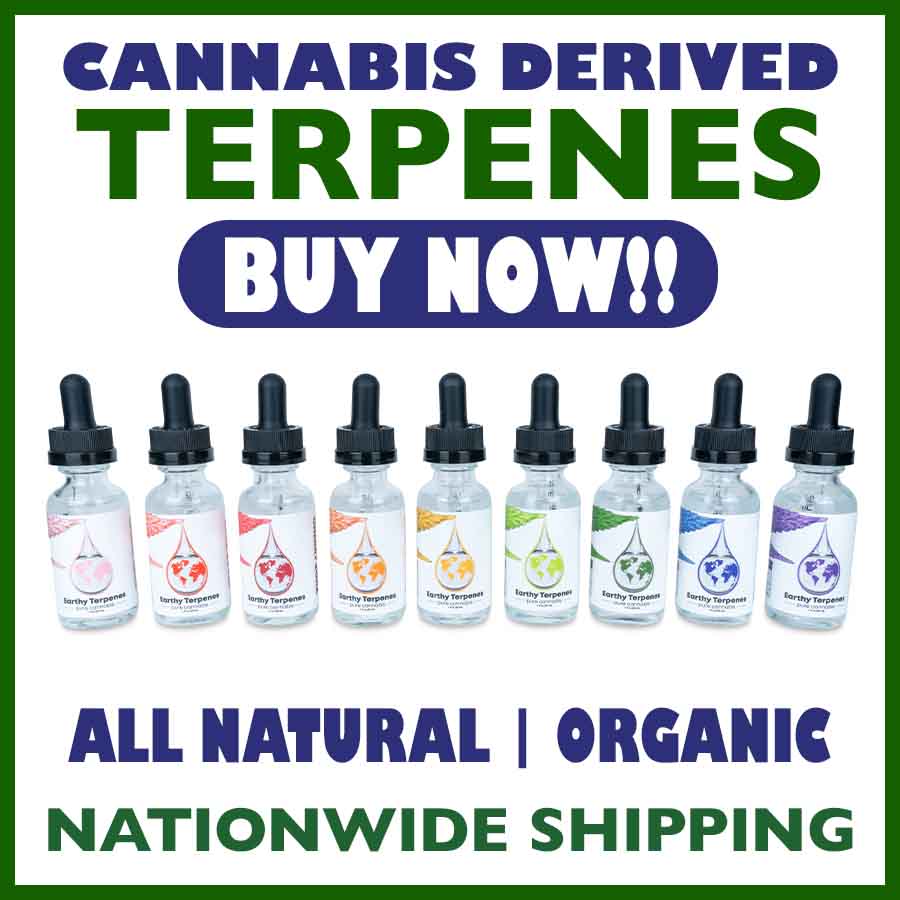Our topic is the myrcene terpene. What does a ripe mango have in common with a cannabis flower—besides the fact that they both taste and smell delicious? The answer is: myrcene. Each of these plants contains myrcene levels in high concentrations—endowing them both with distinctive healthful properties and overlapping aromas [1].
Myrcene (β-myrcene) is a plentiful monoterpene that occurs in many other plant species as well, including hops, thyme, and lemongrass. A popular flavoring agent of food and beverages, beta-myrcene is the most abundant terpene in the cannabis plant. This article aims to address the key characteristics of myrcene and help consumers navigate its benefits.
What are terpenes?
Terpenes are everywhere. They’re in our food, the flowers around us, and the cannabis we enjoy. Put simply, they are chemicals found in plants that affect the way they smell and taste. Cannabis plants simply happen to contain high concentrations of these aromatic compounds. Additionally, the main compounds can help a plant survive through the smells they express. They can protect plants from being eaten by insects or other animals by giving off a repellent scent [2]. On the other hand, terpenes also emit pleasing aromas to attract pollinators.
What is myrcene?
In scientific terms, myrcene is a natural hydrocarbon. More precisely classified as a monoterpene, myrcene is the primary component of essential oils such as bay, ylang-ylang, and juniper berry [3]. Though anecdotal reports suggest myrcene influences sedation sensations in the human body, more research is needed to know for certain.
Spicy, earthy and musky
In cannabis, the flavors and smells of myrcene have been described as spicy, earthy, and musky, and like hops. These give cannabis strains high in myrcene an overall mildly sweet flavor profile. Other terpenes in cannabis combine with myrcene to create more complex scents [4]. This is responsible for the recognizability of popular hemp and marijuana cannabis strains.
Essential oils and myrcene
Essential oil that contains myrcene may contribute to benefits realized from aroma. Also, the myrcene may trigger other benefits as it works synergistically with cannabinoids in the endocannabinoid system—such as CBD and THC and others—as part of the entourage effect.
The psychoactive effects of THC and any potential effects of CBD may be enhanced through this system. Moreover, cannabis with high myrcene levels is said to contribute to relaxation, yet additional research in this is needed [5].
Where do you find myrcene?
This abundant terpene is found in countless plants in nature and has been extracted for use in cosmetics, foods, beverages, vapes and other products.
Myrcene in common products
As an intermediate ingredient used in the perfumery industry, myrcene contributes to a clove-like smell.
Though it has a pleasant odor, it is rarely used directly because its chemical composition can cause it to polymerize without other additives. Because myrcene is unstable in the air, it is more highly valued as an intermediate ingredient for the preparation of flavor and fragrance chemicals such as menthol, citronellol, geraniol, and linalool [6].
Foods with high myrcene levels
Foods with high levels of myrcene include sweet basil, ylang-ylang, bay, parsley, wild thyme, lemongrass, eucalyptus, hops, and mangoes. Additionally, myrcene may be added to foods and beverages as a spicy, earthy flavoring.
Myrcene in cannabis strains
All cannabis strains contain myrcene, though some more so than others. In cannabis, it not only contributes to the musky, earthy flavor and aroma, but it also may contribute to the entourage effect by working synergistically to enhance the effects of the cannabinoids such as THC and CBD. High doses of myrcene consumed through cannabis have been linked to wellness benefits through the entourage effect [5]. We’ll look at that in the next section.
How does myrcene influence the entourage effect?
Originally proposed in 1999, the entourage effect describes a mechanism by which cannabis compounds such as terpenes and flavonoids act synergistically with cannabinoids to modulate the overall psychoactive and other effects of the plant.
Are there therapeutic benefits to myrcene?
Myrcene may have the right chemical composition to be beneficial to humans, and scientists are pursuing the answer. Recent research has shown that some terpenes have the potential to offset certain unwanted aspects of cannabinoids, allowing for more positive experiences.
For example, myrcene may influence the interactions among cannabinoids to create a unique cannabis experience. A cultivar that is both high in THC and myrcene, for instance, may offer psychoactive properties while at the same time bringing relaxing effects. This may be attributed to the interaction between THC and myrcene, though more research is needed [7].
Cannabis strains high in myrcene
Does every strain have the terpene? All of them likely contain it, but these ones in particular are typically high in myrcene:
Final thoughts on myrcene
The relevance of cannabis derived terpenes is becoming more widely appreciated. Yet, terpene research has lagged as scientists spend the bulk of their efforts on cannabinoids such as CBD and THC. Nonetheless, proponents continue to discover the joys of beta myrcene and other terpenes, recognizing that even though we don’t fully understand their effects yet—these aromatic compounds promise to enhance our experience of the auspicious herb.
Why Does it Taste So Good? – Understanding the Terpene Flavor Wheel
Disclaimer – Information is provided for educational purposes. It does not, and is not intended to, constitute legal advice or medical advice. We attempt to be accurate and up to date but the legality and science surrounding cannabinoids is evolving. The author is neither a lawyer nor legal expert, doctor nor medical expert. You should check with your local authorities and medical providers before buying or using any products.





